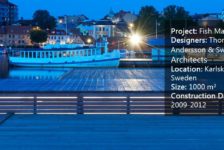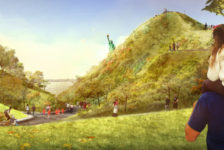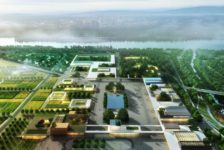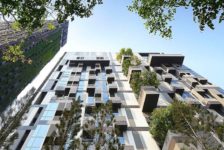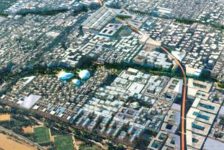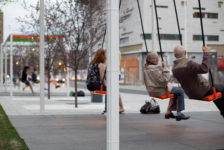One word sums up present-day China: Speed! China is forging ahead at a rapid pace, with little regard for the many negative consequences piling up in its wake. Landscape Architecture in China happens extremely quickly and is under great pressure. At times, designs are installed even before construction details are complete. There are positive side effects of this rapid pace, such as construction advancements that are paving the way to transform the industry. However, after installation, sites are often all but forgotten. Building and park maintenance is rare, and these installations often fall into a state of decay, becoming hazardous to the people who use them. The Open Door Policy of 1978 initiated by Deng Xiaoping opened China up to the outside world and paved the way for major change. Since the 1980s, modifications within the political structure have been a driving factor for China’s rapid pace. Officials in China serve short terms and must produce results quickly in order to receive a promotion. This motivational structure has driven local government officials to build very rapidly.
China’s rapid pace certainly creates opportunity for positive growth. The rate of construction in China spurs technological innovation and creates jobs for people in the planning, design, engineering, and construction fields. For example, Broad Sustainable Buildings of Chingsha,
China, has broken records in construction speed, having built T30, a 30-story hotel, in just 15 days! During the SARS (Severe Acute Respiratory Syndrome) epidemic of 2003, a 1,000-bed SARS hospital was built in one week in Xiaotangshan.
The downfalls There are also adverse side effects of China’s rapid growth. Quite frequently, parks and buildings are installed too hastily. Designs are not always well thought-out and are often installed without the necessary period of refinement required to make a good design great. Speed and budget concerns can also lead to designs that are not always installed safely.
Turenscape’s Houtan Park Walking around Shanghai, the most international city in China, one can find a plethora of examples of unsafe landscape architecture. Consider Turenscape’s Houtan Park in the Shanghai World Expo waterfront. The site offered an abundance of challenges, including a very narrow shape along the Huangpu River and the fact that it was a brownfield site.
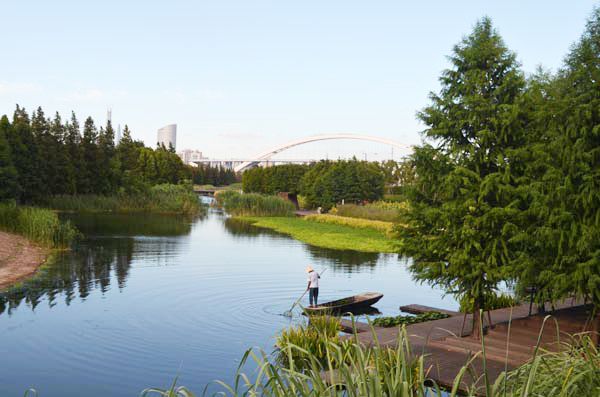
Houtan Park, photo credit: Lisa Sabella
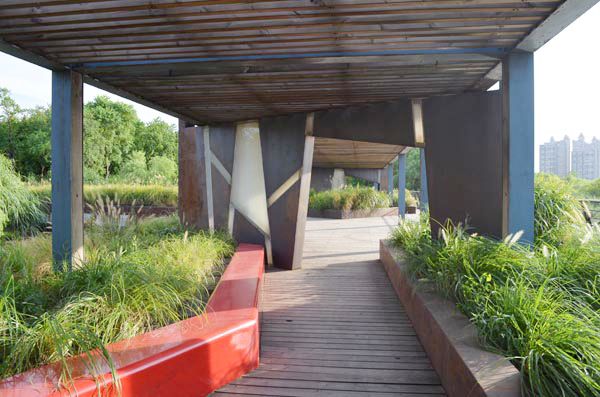
Structure and planting at Houtan Park; photo credit: Lisa Sabella
The design offers a solution to the brownfield problem that is both restorative and aesthetic. Houtan Park is home to beautiful and healthy artificial wetlands that clean polluted water as it trickles down the gradual gradient of the site. The amazing clarity of the water declares the success of the design, especially in sharp contrast to the brown waters of the Huangpu River adjacent to the site.
However, there is a downside to visiting Houtan Park: The site is sometimes unsafe for visitors. While walking along the boardwalk, it is common to find missing planks where a foot has pressed through to the water beneath; a person could easily break an ankle on one of these many holes in the boardwalk. The interesting shade structures along the bank of the wetlands are another problem. In the original design, the structures were brilliant red and visually striking, but at present they are rusted, faded, and even broken, most likely ripped apart by the wind, only to remain in that condition. The site was constructed for the
2010 World Expo, so it is shocking to witness the degradation that has occurred in just a few years.
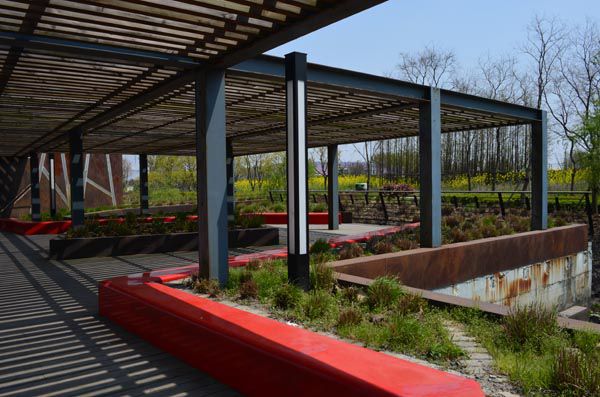
Shade structures at Houtan Park; photo credit: Lisa Sabella
This situation is not unique. Similar conditions are commonly found in many beautiful parks all over Shanghai.
The problem comes from a combination of tight budgets and overlooked maintenance. It seems that in modern-day China, things are designed, built, then left to fall into disrepair until they must eventually be removed and replaced. It is both wasteful and disheartening.
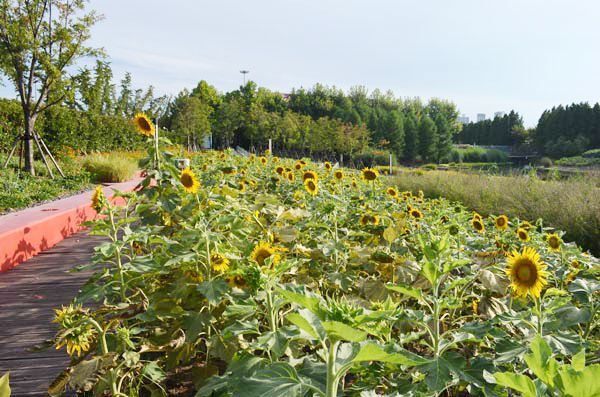
Sunflower display Houtan Park; photo credit: Lisa Sabella
, thorough, and effective, which makes it unfortunate to experience the park in such a state of disrepair. As an admirer of the
2010 ASLA award-winning design, I found it extremely disappointing to observe the unsafe conditions on the site. Houtan Park is a positive environmental example, amidst a slew of negative ones found all over China, which is why it should be treasured and cared for. In order to create safe and comfortable spaces, designers must create maintenance plans that are followed by park staff to ensure that places like Houtan Park last for people to enjoy for generations to come.
You may also be interested in reading: Turenscape Design Outstanding River Park Top 10 Names In Landscape Architecture Today (Featuring Turenscape) Article written by Lisa Sabella
Published in Blog







